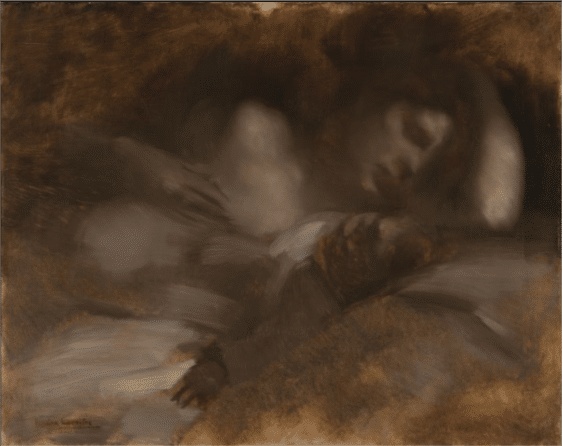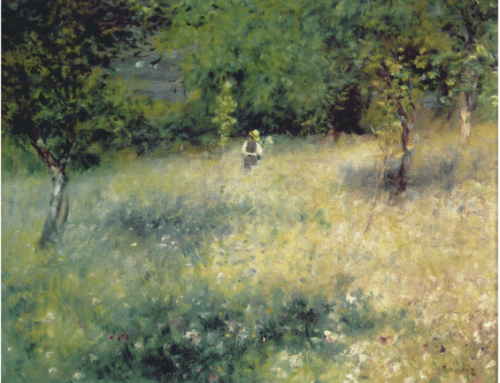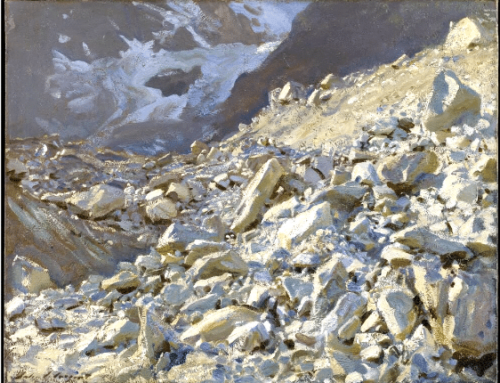Eugène Carrière’s painting “The Sleep” (above) represents a woman and her infant sleeping side by side. Yet despite the close-up view, the blurry and sweeping mode of representation eludes the onlooker. The outlines of both figures can barely be made out as they appear floating in shadow. The soft focus and near monochromatic palette of greys and browns – a trademark of this 19th century French artist – communicate the bond of mother and child while veiling them from the outside world. Images of mother and child form a substantial part of Carrière’s oeuvre.
Though some experts consider him unclassifiable, Carrière is sometimes lumped together with the Symbolists, a nineteenth-century movement in art and literature defined by its intention to represent archetypal truths, often using dreamlike imagery and symbolism of a dark, mysterious, or mystical nature.
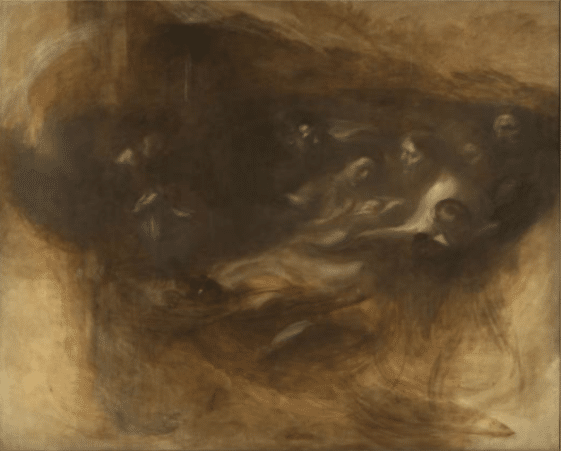
Eugène Carrière, The Stages of Life: Birth (Maternity), 1886
Something in Carrière’s images of sleeping women and children, as in many Symbolist works, gestures toward the timeless, the sacred, and the otherworldly all at once, and all slightly tinged with a hint of the unnerving or grotesque. In “The Sleep” (top of page), the woman seems to be slightly grimacing, as if in a troubling dream; her skin is tightly drawn against her face, emphasizing the bones of her cheek and eye-socket. The child’s hand is clearly visible, but the precise details of its face remain strangely ill-defined.
The below image from Carrière is even harder to make out, and deliberately so. This monotype print, titled either “Sleep” or “Sleeping Child,” is meant to suggest multiple interpretations, very much like an image in a dream.
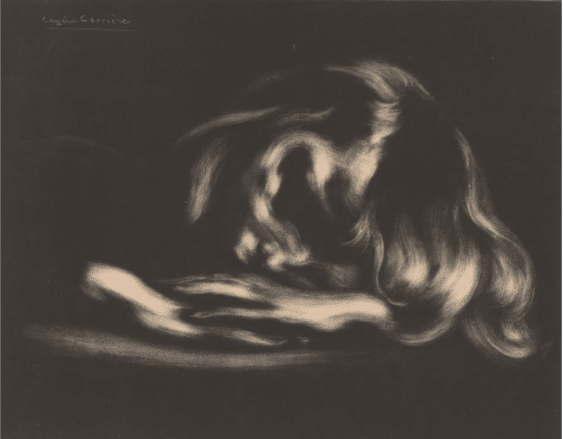
Eugene Carrière, “Sleep (Sleeping Child),” lithograph, printed chine-colle, on wove paper, roughly 12 x 16 inches, c. 1885
At first it may appear to be the traces of some sort of spectral movement, or a disembodied head of flowing hair. But then perhaps you notice the folded hands and realize it’s someone lying down. It’s been pointed out, however, that while this print may first appear to resolve itself into the tender image of a sleeping child – some say the artist’s son – an even closer look reveals a face misshapen with exhaustion. (If you turn your head to the right, you can suddenly make it out.)
Carrière produced such richly inked, grainy images using a lithographic technique of his own variation. He covered the flat stone surface using a dark rubbing crayon then wiped, scratched, hollowed, or rubbed away the ink to create undulating, often uncanny figures that reward sustained study. In addition to printmaking, he also painted in oils.
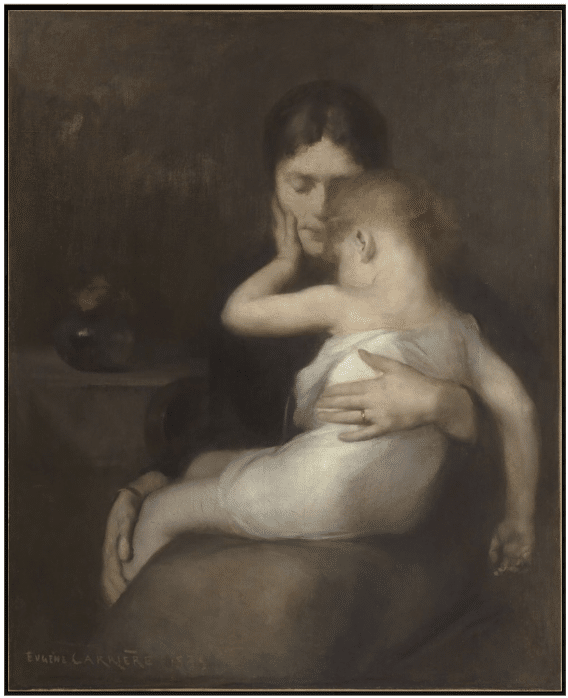
Eugene Carrière, Mother and Child, oil, c. 1895
French writer Jean Dloent (1835-1909) once described Carrière’s unusual, near-monochromatic works as “realities having the magic of a dream,” but perhaps they are something closer to a visual archaeology of the psychological imagination.
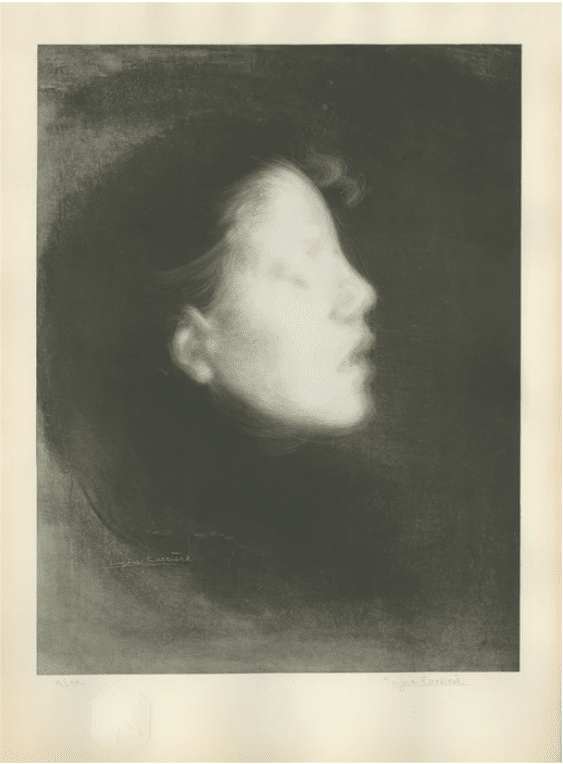
Eugène Carrière’, “Tête de Femme,” lithograph printed on chine-collé on wove paper. 1895
In a lecture Carrière delivered in 1901, he describes half-buried fossils of extinct animals in terms that could almost apply to his own paintings: “It is like being present at the labor of elemental Nature (that despotic artist) retaking possession of the intermediary species, which are swallowed up and melted down again, by some fatal law, in the crucible that once shaped them.”
Among Carrière’s students were those who would become known as the Fauvists—André Derain, Francis Jourdain, and Henri Matisse. Pablo Picasso, on his arrival in the city in 1901, studied Carrière closely. Carrière’s moody figures and quasi-monochrome palette are recognized as direct influences on Picasso’s pink and blue periods.
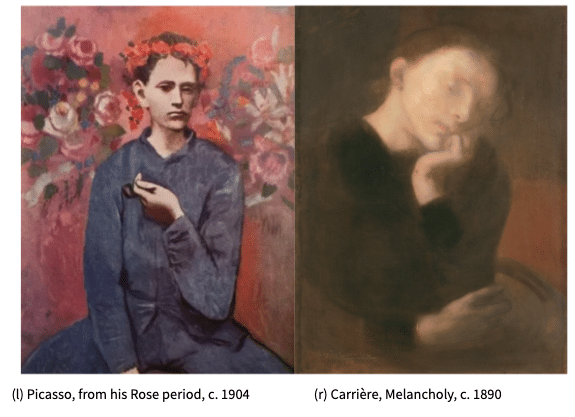
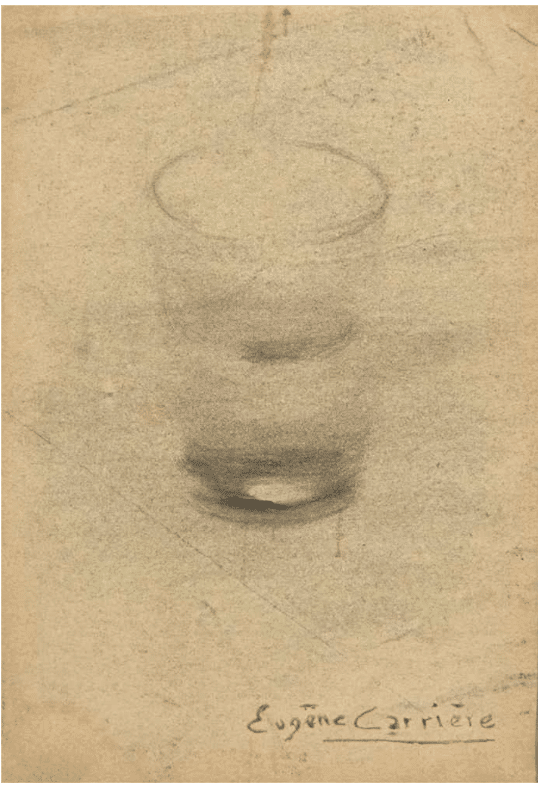
Eugène Carrière, Glass of Water, charcoal sketch
‘BEHIND THE SCENES’ ART TRIPS
If you’re inspired by learning about the greatest paintings of the past, Fine Art Connoisseur Magazine’s “Behind the Scenes” art trips allow you to view such magnificent artworks – in person – from a new perspective. These are fun, expert-led group excursions to museums – but that’s just the beginning. THESE are visits with artists, private viewings in world-class museum galleries, iconic art experiences that leverage deep contacts in the art world. Guaranteed to create lifetime memories.
This year’s trip is to romantic Italian cities Verona and Venice. Hosted by Fine Art Connoisseur Publisher Eric Rhoads and Editor-in-Chief Peter Trippi, it’s a continuation of an twelve-year tradition. Learn more here.

